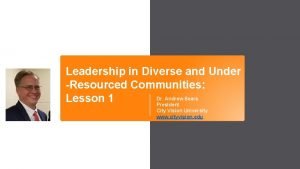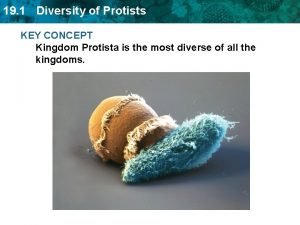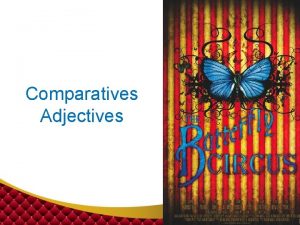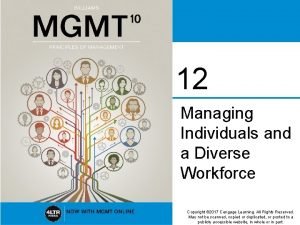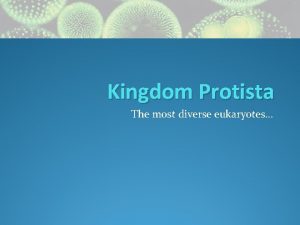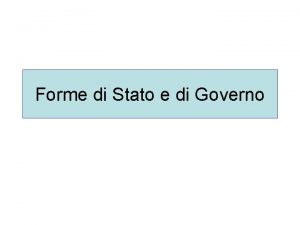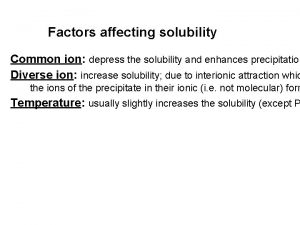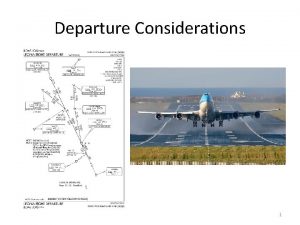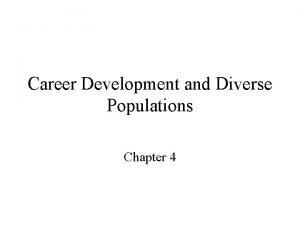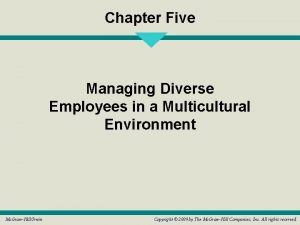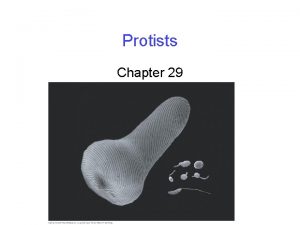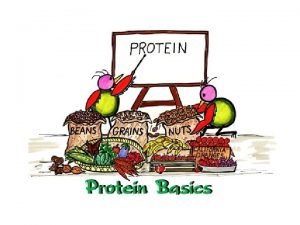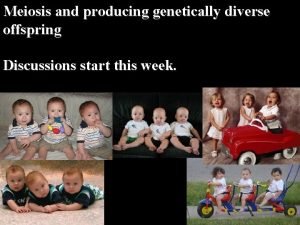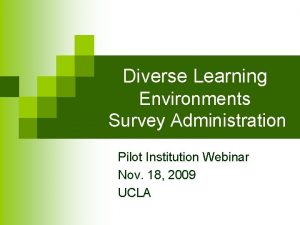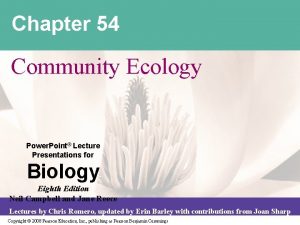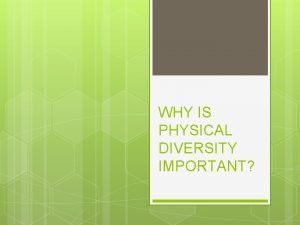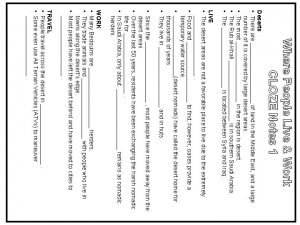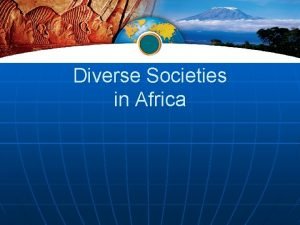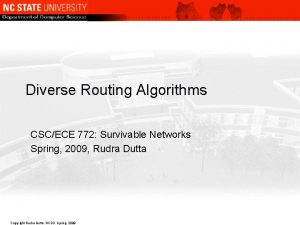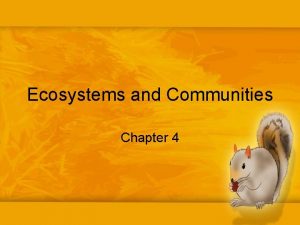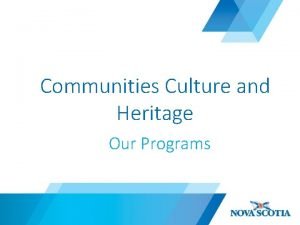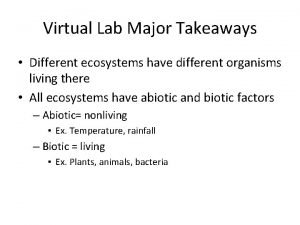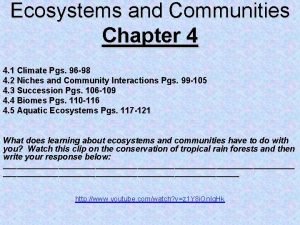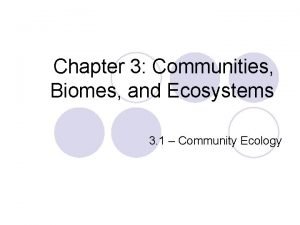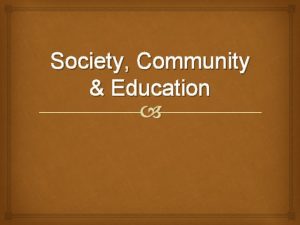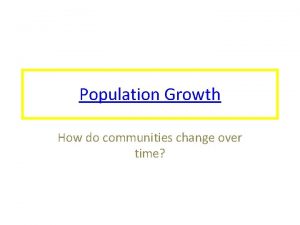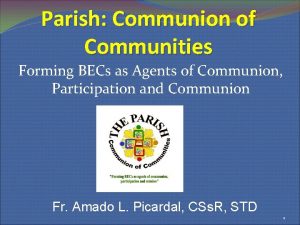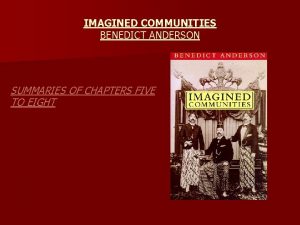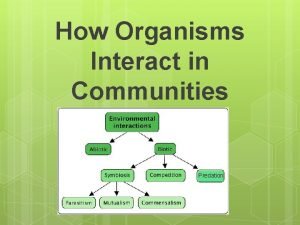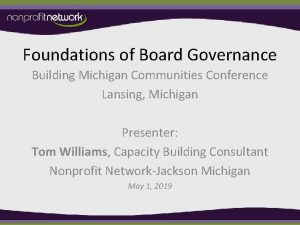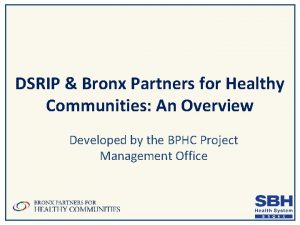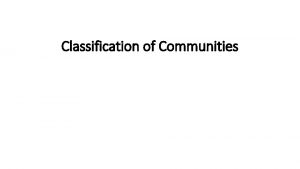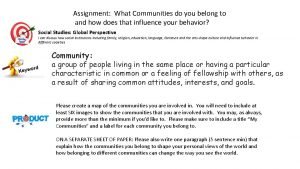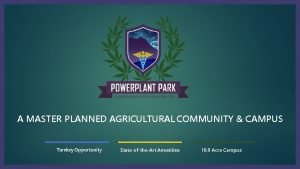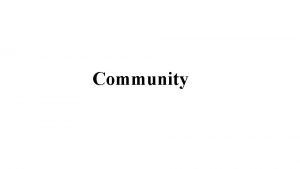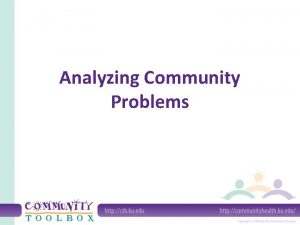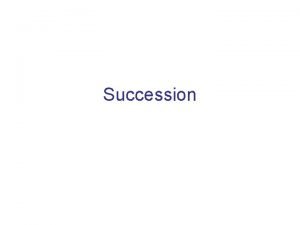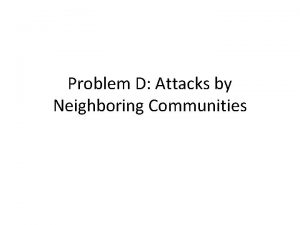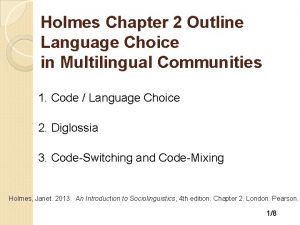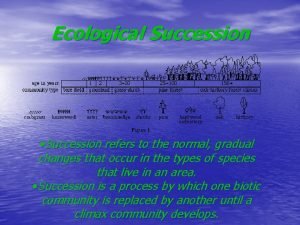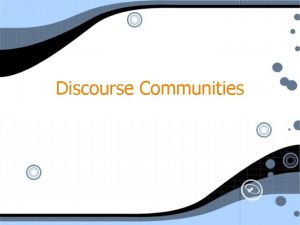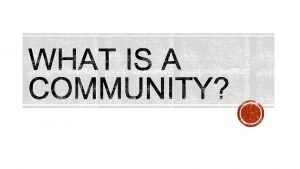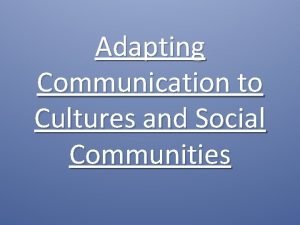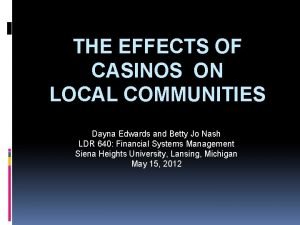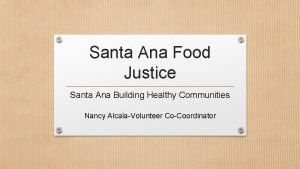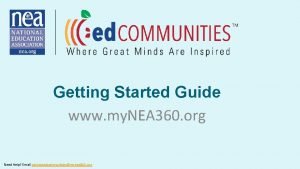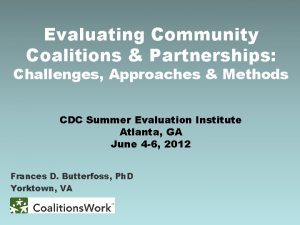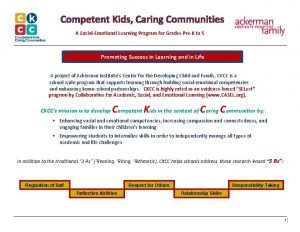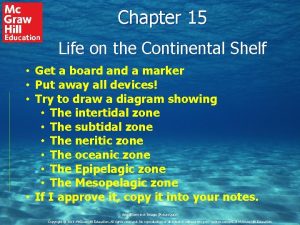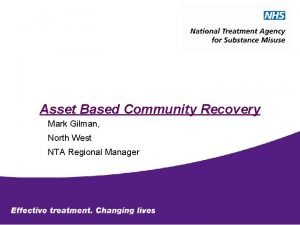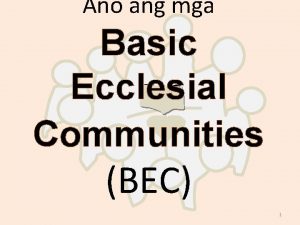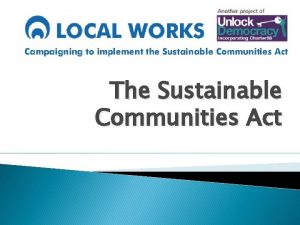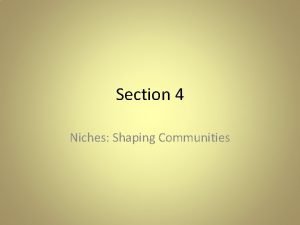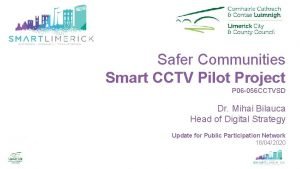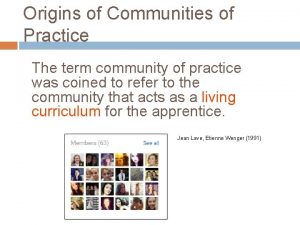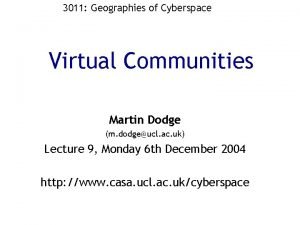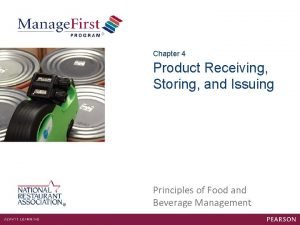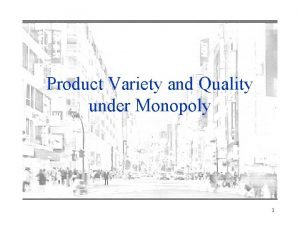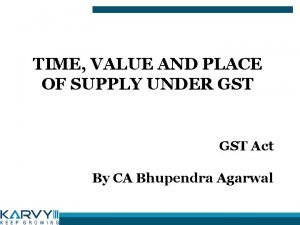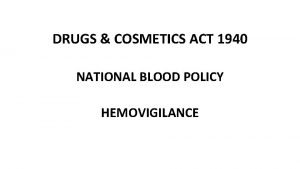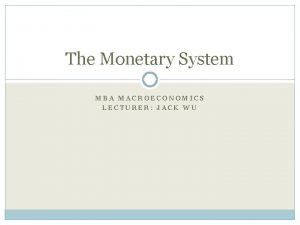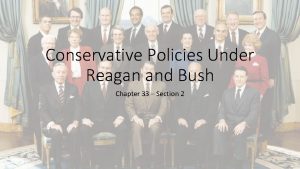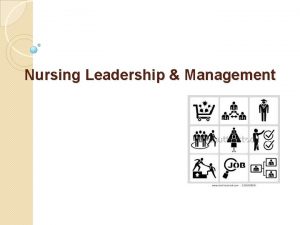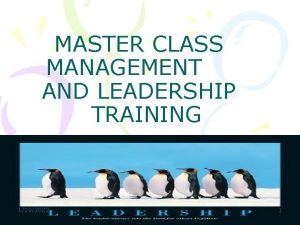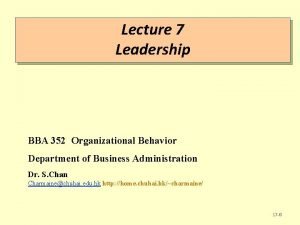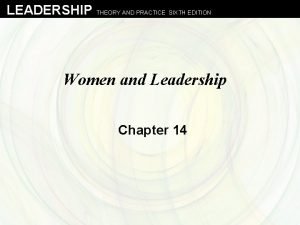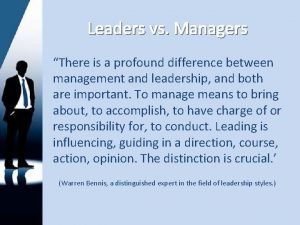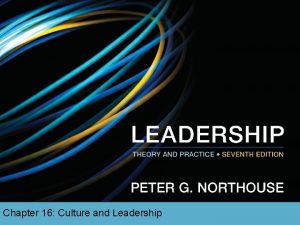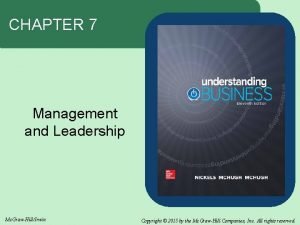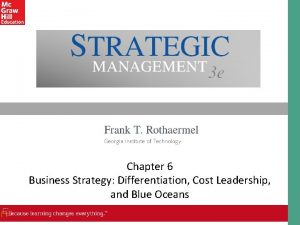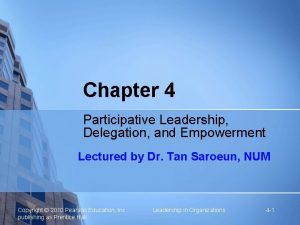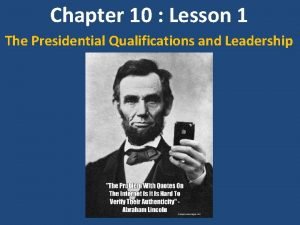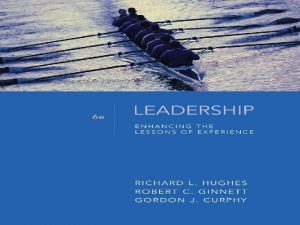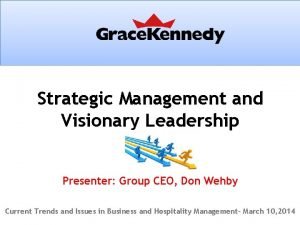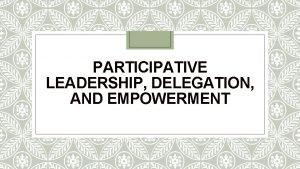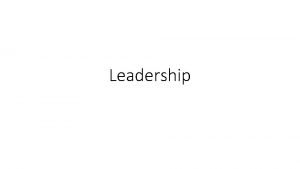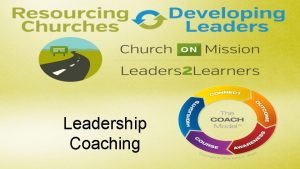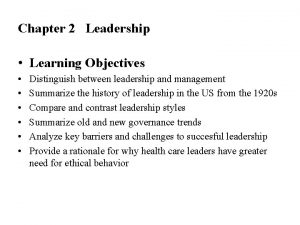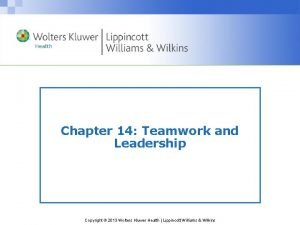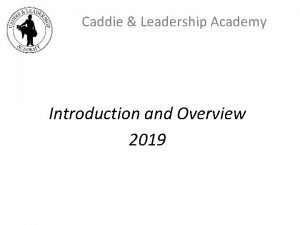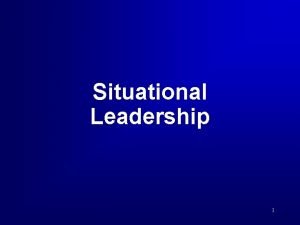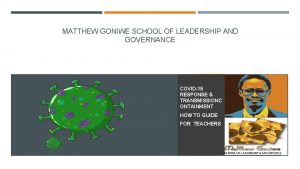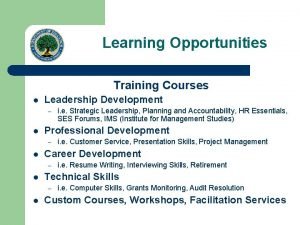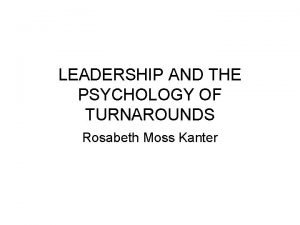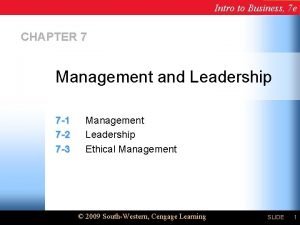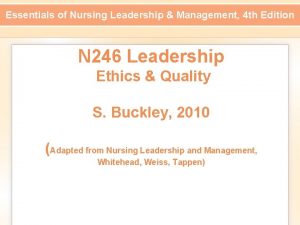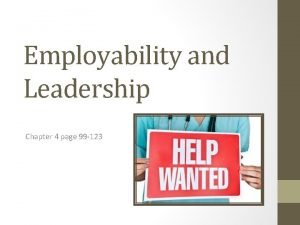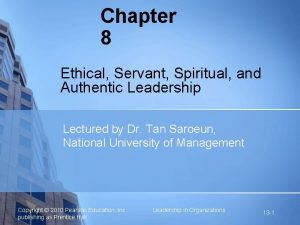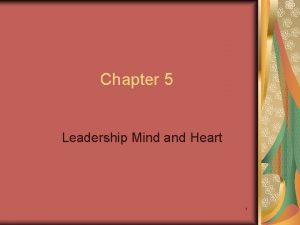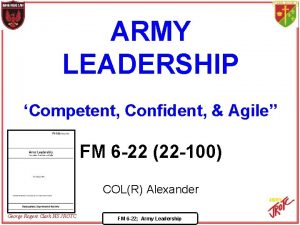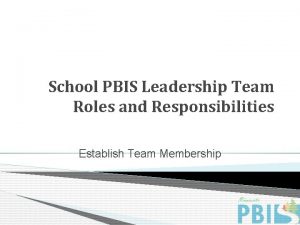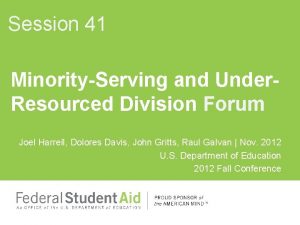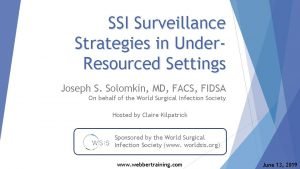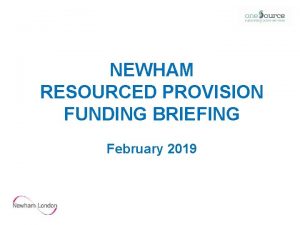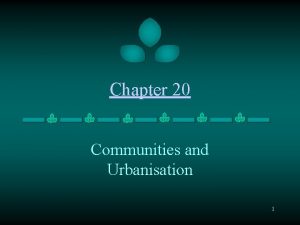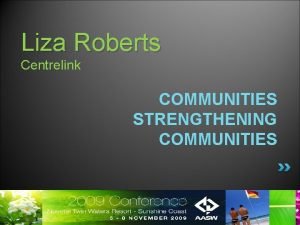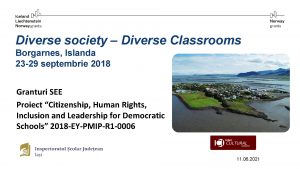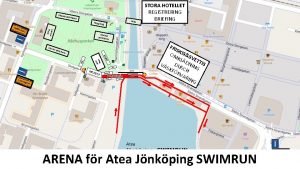Leadership in Diverse and Under Resourced Communities Dr











































![Boundary Processing: A. W. Tozer [B 1] Figure 5. A. W. Tozer Timeline, Clinton, Boundary Processing: A. W. Tozer [B 1] Figure 5. A. W. Tozer Timeline, Clinton,](https://slidetodoc.com/presentation_image_h/290ea92e5a17041576e0a6ca7ddd95f9/image-44.jpg)
![Boundary Processing: A. W. Tozer [B 1] [-B 2 -] Figure 5. A. W. Boundary Processing: A. W. Tozer [B 1] [-B 2 -] Figure 5. A. W.](https://slidetodoc.com/presentation_image_h/290ea92e5a17041576e0a6ca7ddd95f9/image-45.jpg)
![Boundary Processing: A. W. Tozer [B 1] [-B 2 -] [--B 3 --] Figure Boundary Processing: A. W. Tozer [B 1] [-B 2 -] [--B 3 --] Figure](https://slidetodoc.com/presentation_image_h/290ea92e5a17041576e0a6ca7ddd95f9/image-46.jpg)










































































































- Slides: 152

Leadership in Diverse and Under -Resourced Communities: Dr. Andrew Sears Lesson 1 President City Vision University www. cityvision. edu

How this Course Helps You Become a Balanced Leader Ministry & Relational Competencies • Cross-Cultural Management & Ministry • Christian Community Development • Urban Youth Ministry • Vocation, Calling & Purpose of Work • Nonprofit Human Resources • Organizational Behavior • Technology, Life Balance & Addiction Leadership in Diverse & Under-Resourced Communities Operations & Governance Competencies • Nonprofit Startup & Board Development • Nonprofit Financial Accounting • Project Management Innovation Competencies • Social Entrepreneurship • Small Business Management Ministry Skills Entrepreneurial Skills Introduction & Capstone Courses Operations Skills Business & Funding Competencies • Marketing • Grant Writing • Nonprofit Fundraising • Nonprofit Managerial Accounting

How this Course Helps You Become a Balanced Leadership Dominant Transformational Leadership Skills Leadership in Diverse & Under-Resourced Communities Cross-Cultural Management & Ministry Transactional Leadership Skills Management Dominant 1. Often personality will determine whether you are in a leadership dominant or management dominant role. 2. Good leaders and managers need to strive to be skilled in all four quadrants.

Course Outcomes After completing this course, you should be able to: 1. Reflect on your leadership journey according to traditional Christian leadership development theory. 2. Create a philosophy of ministry and leadership integrating personal experience with key concepts from this course. 3. Construct a leadership toolkit for new supervisors in an organization by applying leadership theories. 4. Develop a plan for expanding your own cross-cultural leadership ability. 5. Use systems thinking to develop a plan that includes personal, physical, cultural and organizational aspects of their own leadership development. 6. Design a plan for an organization to increase the representation of women and people of color in leadership. 4

Course Outline by Week 1. 2. 3. 4. 5. 6. 7. The Leadership Journey Leadership Timeline and the Reflective Evaluation Pattern Leadership Maturing Processes Servant Leadership and Developing Philosophy of Ministry Transformational Leadership and Full-Range Leadership Leading in Under-Resourced & Diverse Environments The Importance of and Challenges to More Diverse Organizational Leadership 8. Leading Organizational Change Across Race, Class and Gender 5

Limitations of Online Learning in Leadership • Head Learning • Mainly what you can get from this course and books • Heart Learning • Counseling & coaching • Justice: Experiencing and healing from long-term suffering as someone experiencing oppression, deep cross-cultural friendships & relationships, long-term experience as a cultural minority (immersion) • Hand Learning (doing) • Experience in leading diverse & under-resourced organizations • Cross-cultural fluency from long-term experience in cross-cultural settings 6

Educational Philosophy & Design of This Course Week 4 Project. Leadership Philosophy Making of a Leader Create 7 Week 7 Project. Personal Diverse Leadership Growth Plan Week 8 Project. Organizational Diversity Strategy Evaluate Week 5 Project. Leadership for New Supervisors The Leadership Experience Analyze Week 2 Project. Leadership Timeline Making of a Leader Live Meetings Forums Apply Understand Remember https: //en. wikipedia. org/wiki/Bloom%27 s_taxonomy Reinforce Content Retention with Reading & Videos Summary Assignments The Leadership Experience

Affective (Heart) Learning Characterize Jesus in Their Life Following Jesus Slowly Reforms Their Life Makes Decision to Follow Jesus Actively Learns About Jesus in own time Attends Church Source: Krathwohl's affective domain taxonomy Characterizing Organization 8 Characterizes Effective Leadership Changes Aspects of How They Lead Valuing Makes Decision to Improve Leadership Style Responding Completes Homework Receiving Attends Class

Books in This Course 9 Pick A Book

Design of Course to Provide Different Lenses 10 Traditional Christian Perspectives on Leadership Making of a Leadership Perspectives Across Race/Ethnicity, Class & Gender Student Selects Book + Supplemental Material Academic Leadership Theories (tools) The Leadership Experience “For now we see through a glass, darkly; but then face to face: now I know in part; but then shall I know even as also I am known. ” 1 Corinthians 13: 12

The Old Engineer & the Hammer 11 A giant engine in a factory failed. The factory owners had spoken to several ‘experts’ but none of them could show the owners how they could solve the problem. Eventually the owners brought in an old man who had been fixing engines for many years. After inspecting the huge engine for a minute or two, the old man pulled a hammer out of his tool bag and gently tapped on the engine. Immediately the engine sprung back into life. A week later, the owners of the business received an invoice from the old man for $1, 000. Flabbergasted, they wrote to the old man asking him to send through an itemized bill. The man replied with a bill that said: • Use of a hammer: $1. 00 • Knowing where to tap: $999. 00 Source: https: //www. tyrell. co/2019/05/the-old-engineer-and-hammer. html

Teaching on Leadership Across Race/Ethnicity, Class and Gender Most Books & Material on Leadership Come from this Perspective White M F Black M F Latino M F Asian M F Upper Middle Class Lower Middle & Working Class Lower Racial groups at the top could be substituted with the primary ethnic groups in any organization or country.

Teaching on Leadership Across Race/Ethnicity, Class and Gender Most Academic Teaching on Leadership for Diverse Communities White M F Black M F Latino M F Asian M F Upper Leadership in Diverse communities Upper Middle Class Middle & Under-resourced communities Lower Middle & Working Class Lower Also Need Leadership in Under-Resourced Communities

Comparing City Vision’s Courses This Leadership Course Cross Cultural Management Christian Leadership Emergence Academic Leadership Theories Gender Lens Race Lens • Race & Ethnicity Lens Race, Class & Gender Lens • Race, Class & Gender Lens Organizational Strategy • Class Lens • Ethnic Identity Development • Global Cultural Dimensions • Systems Thinking • • • 14 Christian Community Development • Race Lens • Christian Community Dev’t • Christian Justice Tradition • Biblical Basis for Justice

15 Why the terms “Diversity” and “Inclusion” Can Be Difficult for Some Evangelical Christians • The term “Inclusion” has often been used by the far left to promote a relativistic “everything’s allowed” approach to morality, which runs counter to Biblical teaching • “Diversity” in some circles has become a loaded word with strong political connotations • In elite, secular academic circles, “diversity” has effectively excluded social class and “inclusion” has typically excluded evangelicals • There has been a battle for “worldview” between elite, secular, academics and Christian worldview. Much of secular teaching on “diversity” incorporates assumptions of a secular worldview, such as materialism.

A Note on Language & Doctrine of Sin • My theological perspective is that all knowledge, language, theories, models and systems are limited and have sin inherently built into them. 16 • Our goal should be to minimize their limitations and offense as much as possible, while also being gracious recognizing the “fallen nature” of language. • General rule is to call people what they prefer to be called, recognizing that age, social class and country often may influence preference. • Recognize that it is important to move culture from oppressive language • Examples • • • Poor vs. At-Risk vs. Vulnerable vs. Under-Resourced vs. Lower/Working Class Hispanic vs. Latino/a vs. Latino vs. Latinx Black vs. African American He/she vs. They vs. alternate He and She vs. always use he People of Color vs. Minorities vs. Black & Brown Race vs. Ethnicity vs. Race/Ethnicity

City Vision’s Rubric for Master’s Courses (How to get an A every time) Dr. Andrew Sears President City Vision University www. cityvision. edu

Rubric Summary 18 • Mastery of Course Content (30% of grade) • How well does the student show mastery of content covered in this assignment and in the course? • Application & Reflection (35% of grade) • Practical Assignment: From the perspective of an organizational Executive Director, senior staff or board member, how effective would this document be in serving the organization and its clients? • Reflection Assignment: From the perspective of a leadership or spiritual mentor, how effectively is the student using this assignment to press into personal growth? • Critical Thinking & Bloom's Level of Learning Mastery (25% of grade) • Does the student's work reflect the level of critical thinking and learning mastery expected of a Senior or Master's student? • See: https: //www. teachervision. com/blooms-taxonomy-overview and https: //www. criticalthinking. org/pages/our-conception-of-critical-thinking/411 • Written Communication (10% of grade) • How effectively does the student reflect the best practices of writing for this type of assignment?

Rubric: Mastery of Course Content (30% of grade) How well does the student show mastery of content covered in this assignment and in the course? 19 Note: this is largely measuring lower level Bloom's taxonomy (remembering & understanding). • 100% - 90%: Exceeds Expectations. Evidence provided by student shows that they have: 1) reviewed all required materials in the course, 2) effectively referenced concepts from course materials, 3) demonstrated mastery of those concepts. • 89% - 80%: Meets Expectations. Evidence provided by student shows that they have: 1) reviewed all required materials in the course, 2) referenced concepts from course materials, 3) demonstrated some understanding of those concepts but not mastery. • 79% - 70%: Minimally Meets Expectations. Evidence provided by student show that they have: 1) reviewed some required materials in the course, 2) referenced a few concepts from course materials, 3) demonstrated some understanding of those concepts but not mastery. • 69% - 1%: Below Expectations. Evidence provided by student show that they likely have not: 1) reviewed required materials in the course, 2) referenced concepts from course materials 3) demonstrated understanding of those concepts. • 0% - 0%. Non-Performance. There is no clear connection to the assignment description or overall course content.

Forums & Minor Assignments Executive Summaries Reinforce Content Retention with Reading & Videos Senior to Graduate Courses Major Projects & Assignments 20 Freshmen to Junior Courses Course Design, Grading Rubrics & Bloom’s Taxonomy

Rubric: Application & Reflection (35% of grade) 21 Practical Assignment: From the perspective of an organizational Executive Director, senior staff or board member, how effective would this document be in serving the organization and its clients? Reflection Assignment: From the perspective of a leadership or spiritual mentor, how effectively is the student using this assignment to press into personal growth • 100% - 90%: Exceeds Expectations. Practical Assignment: meets quality expected of senior staff; fully meets expectations of similar documents or projects of senior leadership in the organization Reflection Assignment: shows the deepest level of reflection expected of students in ways that could lead to deep growth; shows that they are embracing the ideals taught in the class at a deep level with intent to apply them to their life. • 89% - 80%: Meets Expectations. Practical Assignment: meets expectations similar documents or projects expected of staff in general in the organization, but not at the level of senior staff. Reflection Assignment: shows good reflection expected of students in ways that could lead to growth; shows that they are embracing the most of the ideals taught in the class with intent to apply them to their life. • 79% - 70%: Minimally Meets Expectations. Practical Assignment: below quality level of most staff but still useful. Does not meet expectations for similar documents or projects of staff in general in the organization, but still provides a useful product Reflection Assignment: shows reflection needed to lead to growth; shows that they are embracing most of the ideals taught in the class with intent to apply them to their life. • 69% - 1%: Below Expectations. Practical Assignment: limited usefulness to most organizations; project is of limited use to the organization and shows little applied mastery of concepts Reflection Assignment: student shows limited attempt to reflect on or apply the concepts covered by this assignment. • 0% - 0%: Non-Performance. There is no attempt to explore or reflect on the ideas, thoughts, and elements of the assignment and provide relevant evidence and information within the assignment.

Rubric: Critical Thinking & Learning Mastery (25% of 22 grade) Does the student's work reflect the level of critical thinking and learning mastery expected of a Senior or Master's student? See: https: //www. teachervision. com/blooms-taxonomy-overview and https: //www. criticalthinking. org/pages/our-conception-of-critical-thinking/411 • 100% - 90%: Exceeds Expectations. Comprehensively explores the ideas, thoughts, and elements of the topic and provides relevant evidence and information that demonstrates all of the following as applicable to the assignment: clarity, relevance, depth, breadth, use of information resources, and logic. Demonstrates mastery at the highest level of Bloom's taxonomy of learning (create, synthesize, evaluate) expected of a Senior or a Master's student as appropriate for this assignment. • 89% - 80%: Meets Expectations. Explores the ideas, thoughts, and elements of the topic and provides relevant evidence and information that demonstrates some of the following as applicable to the assignment: clarity, relevance, depth, breadth, and use of information, and logic. Demonstrates only lower level of Bloom's taxonomy of learning ( understand) that is less than what is typically expected of a Senior or a Master's student as appropriate for this assignment. • 79% - 70%: Minimally Meets Expectations. Explores the ideas, thoughts, and elements of the topic and provides relevant evidence and information that demonstrates some of the following as applicable to the assignment: clarity, relevance, depth, breadth, and use of information, and logic. Demonstrates only lower level of Bloom's taxonomy of learning ( understand) that is less that what is typically expected of a Senior or a Master's student as appropriate for this assignment. • 69% - 1%: Below Expectations. Attempts to explore the ideas, thoughts, and elements of the topic and provide relevant evidence and information, but demonstrates few of the following as applicable to the assignment: clarity, relevance, depth, breadth, use of information resources, and logic. Demonstrates only lowest level of Bloom's taxonomy of learning (remember) that is less than what is typically expected of a Senior or a Master's student for this assignment. • 0% - 0%: Non-Performance. There is no attempt to explore the ideas, thoughts, and elements of the topic and provide relevant evidence and information within the assignment.

Rubric: Written Communication (10% of grade) How effectively does the student reflect the best practices of writing for this type of assignment? 23 • 100% - 90%: Exceeds Expectations. Displays clear control of syntax and mechanics. The organization of the work shows appropriate transitions and flow between sentences and paragraphs. Written work contains no errors and is very easy to understand. • 89% - 80%: Meets Expectations. Displays control of syntax and mechanics. The organization of the work shows transitions and/or flow between sentences and paragraphs. Written work contains only a few errors and is mostly easy to understand. • 79% - 70%: Minimally Meets Expectations. Displays basic control of syntax and mechanics. The work is not organized with appropriate transitions and flow between sentences and paragraphs. Written work contains several errors, making it difficult to fully understand. • 69% - 1%: Below Expectations. Displays limited control of syntax or mechanics. The work does not include any transitions and does not flow easily between sentences and paragraphs. Written work contains major errors. • 0% - 0%: Non-Performance. Fails to display control of syntax or mechanics. Organization is also not present.

Lesson 2. Summary of Clinton’s Making of a Leader & the Reflective Evaluation Pattern Dr. Andrew Sears President City Vision University www. cityvision. edu Leadership in Diverse and Under-Resourced Communities

Clinton’s Generic Timeline Figure 1. Clinton’s generic timeline. J. Robert Clinton, The Making of a Leader (Colorado Springs: Navpress, 1988), 44. 25

Clinton’s Generic Timeline Figure 1. Clinton’s generic timeline. J. Robert Clinton, The Making of a Leader (Colorado Springs: Navpress, 1988), 44. 26

Clinton’s Generic Timeline Figure 1. Clinton’s generic timeline. J. Robert Clinton, The Making of a Leader (Colorado Springs: Navpress, 1988), 44. 27

Clinton’s Generic Timeline Figure 1. Clinton’s generic timeline. J. Robert Clinton, The Making of a Leader (Colorado Springs: Navpress, 1988), 44. 28

Clinton’s Generic Timeline Figure 1. Clinton’s generic timeline. J. Robert Clinton, The Making of a Leader (Colorado Springs: Navpress, 1988), 44. 29

Clinton’s Generic Timeline Figure 1. Clinton’s Generic Timeline. J. Robert Clinton, The Making of a Leader (Colorado Springs: Navpress, 1988), 44. 30

Six Stage to Simplified Four Stage Timeline Combined to Phase 1 Figure 2. Clinton’s ministry timeline. Clinton, Strategic Concepts, 63. Combined to Phase 4 31

Ministry Timeline: Sub-Phases Figure 2. Clinton’s generic ministry timeline. Clinton, Strategic Concepts, 63. 32

General Ministry/Ministry Maturing Subphases 33

Ministry Timeline – Boundaries B 1, B 2, B 3 Figure 3. Clinton’s generic ministry timeline. Clinton, Strategic Concepts, 63; and Clinton, Boundary Processing (Position Paper, 1995), 10. 34

Ministry Timeline – Boundaries B 1, B 2, B 3 Figure 3. Clinton’s generic ministry timeline. Clinton, Strategic Concepts, 63; and Clinton, Boundary Processing (Position Paper, 1995), 10. 35

Ministry Timeline – Boundaries B 1, B 2, B 3 Boundary events define the point on a timeline where two phases meet, or two sub-phases meet or at which there is a significant change in ministry. Clinton’s technical definition is “a boundary point represents the end of one sub-phase or phase and the beginning of a new sub-phase or the point of significant change from one ministry assignment to another. ” Figure 3. Clinton’s generic ministry timeline. Clinton, Strategic Concepts, 63; and Clinton, Boundary Processing (Position Paper, 1995), 10. 36

Ministry Timeline – Boundaries B 1, B 2, B 3 37 Boundary events define the point on a timeline where two phases meet, or two sub-phases meet or at which there is a significant change in ministry. Clinton’s technical definition is “a boundary point represents the end of one sub-phase or phase and the beginning of a new sub-phase or the point of significant change from one ministry assignment to another. ” Boundary Events can come about as a result of: Crisis Promotions A new ministry Learning a major new concept Unusual experiences Life-changing encounters with person A divine guidance experience Geographic move Figure 3. Clinton’s generic ministry timeline. Clinton, Strategic Concepts, 63; and Clinton, Boundary Processing (Position Paper, 1995), 10.

Ministry Timeline – Boundaries B 1, B 2, B 3 Figure 3. Clinton’s generic ministry timeline. Clinton, Strategic Concepts, 63; and Clinton, Boundary Processing (Position Paper, 1995), 10. 38

Few Finish Well 39 “Beyond Plateau” “Doing to Being” “Logistics to Supply” Figure 4. Diminishing progression on the generic ministry timeline, Sattgast, 71.

Ministry Stagnation Most major failures or stagnation in ministry are rooted in spiritual formation issues rather than ministerial or strategic formation issues. Many of these can be traced to basic breaches of integrity where ministers cannot move past some form of self-deception. “Beyond Plateau” “Doing to Being” “Logistics to Supply” Figure 4. Diminishing progression on the generic ministry timeline, Sattgast, 71. 40

Phase 2: General Ministry: B 1 to B 2 B 1 Logistics to Supply B 2 Doing to Being 41

Phase 3: Focused Ministry: B 2 to B 3 B 1 Logistics to Supply B 2 Doing to Being B 3 Beyond Plateau 42

Boundary Processing: A. W. Tozer Figure 5. A. W. Tozer Timeline, Clinton, Boundary Processing, 17. 43
![Boundary Processing A W Tozer B 1 Figure 5 A W Tozer Timeline Clinton Boundary Processing: A. W. Tozer [B 1] Figure 5. A. W. Tozer Timeline, Clinton,](https://slidetodoc.com/presentation_image_h/290ea92e5a17041576e0a6ca7ddd95f9/image-44.jpg)
Boundary Processing: A. W. Tozer [B 1] Figure 5. A. W. Tozer Timeline, Clinton, Boundary Processing, 17. 44
![Boundary Processing A W Tozer B 1 B 2 Figure 5 A W Boundary Processing: A. W. Tozer [B 1] [-B 2 -] Figure 5. A. W.](https://slidetodoc.com/presentation_image_h/290ea92e5a17041576e0a6ca7ddd95f9/image-45.jpg)
Boundary Processing: A. W. Tozer [B 1] [-B 2 -] Figure 5. A. W. Tozer Timeline, Clinton, Boundary Processing, 17. 45
![Boundary Processing A W Tozer B 1 B 2 B 3 Figure Boundary Processing: A. W. Tozer [B 1] [-B 2 -] [--B 3 --] Figure](https://slidetodoc.com/presentation_image_h/290ea92e5a17041576e0a6ca7ddd95f9/image-46.jpg)
Boundary Processing: A. W. Tozer [B 1] [-B 2 -] [--B 3 --] Figure 5. A. W. Tozer Timeline, Clinton, Boundary Processing, 23. 46

Recognizing Boundary Processing • ENTRY: Backward reflection • EVALUATION: Upward reflection • ENDING: Forward look Source: Clinton, Boundary Processing, Abstract. 47

Generic to a Ministry Timeline Figure 2. Clinton’s ministry timeline. Clinton, Strategic Concepts, 63. 48

Template for Live Meeting Name of Boundary Phase Dates 49

Reflective Evaluation Pattern 1. God initiates intense processing to gain the attention of the leader. 2. The leader is forced to do serious reflection about ministry, life, and ultimate reality. 3. The leader does an evaluation that results in formative thinking and commitment to growth measures learned in the processing. 4. The leader experiences a renewed determination to know God more deeply. 5. God blesses the commitment and the renewed determination by deepening the relationship between Himself and the leader. Source: Table 7. 1 The Making of a Leader 50

Major Project: Synthesis vs. Analysis Part 1 Source: http: //thecontextofthings. com/2014/12/22/2015 -business-trend-synthesis-vs-analysis/ Part 2 51

Lesson 3. Leadership Maturing Processes & Finishing Well Dr. Andrew Sears President City Vision University www. cityvision. edu Leadership in Diverse and Under-Resourced Communities

Summary of God’s Maturing Process • Mature ministry flows from a mature character. • A mature character comes through difficult processing. • Many leaders go through such processing without realizing the benefit of it. • Spiritual authority is not a goal but rather a byproduct. Source: The Making of a Leader Chapter 7 53

Upward Development Pattern 1. Being —conversion or sense of awareness of salvation 2. Doing —leadership commitment 3. Being —inner-life growth 4. Doing —development and use of ministry skills 5. Being —ministry philosophy becomes life-based (John 15: 5 reality) 6. Union life (being and doing fused) Source: The Making of a Leader Chapter 7 54

Examples of How God Uses Isolation & Lessons Observed Isolation Type Trials Sickness Prison Personality Conflict and Organizational Pressures Self-Choice for Renewal Self-Choice for Education, Training, or Transition • • • • • • Dependence upon God Knowledge of supernatural healing Urgency to accomplish God’s work Deepening of inner life through intercessory prayer Dependence upon God Increased use of mental faculties, especially memory Submission to God’s will Indirect influence through modeling and a widened intercessory life Submission to God Submission to spiritual authority Non-vindication of one’s spiritual authority Value of others’ perspectives Dependence upon God New perspective on ministry Rekindled sense of destiny Power of prayer Inner convictions from Word Spiritual guidance New perspective on ministry Rekindled sense of destiny Openness to new ideas and change Dependency upon the wider body of Christ Broadening through exposure to others 55

Clinton’s Observations on Finishing Well • Observation 1. Few leaders finish well. • Observation 2. Leadership is difficult. • Observation 3. God's enabling presence is the essential ingredient of successful leadership. • Observation 4. Spiritual leadership can make a difference. Less than 70% of leaders do not finish well Source: The Making of a Leader Appendix D 56

Six Barriers to Finishing Well 1. 2. 3. 4. 5. 6. Finances-their use and abuse. Power-its abuse. Pride-which leads to downfall. Sex-illicit relationships. Family-critical issues. Plateauing. Source: The Making of a Leader Appendix D 57

Six Characteristics of Leaders Who Finish Well • Characteristic 1 - They maintain a personal vibrant relationship with God 58 right up to the end. • Characteristic 2 - They maintain a learning posture and can learn from various kinds of sources—life especially. • Characteristic 3 - They manifest Christ-likeness in character as evidenced by the fruit of the Spirit in their lives. • Characteristic 4 - Truth is lived out in their lives so that convictions and promises of God are seen to be real. • Characteristic 5 - They leave behind one or more ultimate contributions. • Characteristic 6 - They walk with a growing awareness of a sense of destiny and see some or all of it fulfilled. Source: The Making of a Leader Appendix D

Five Enhancements to Help You Finish Well • Enhancement 1. Perspective. • Enhancement 2. Renewal. • Enhancement 3. Disciplines. • Enhancement 4. Learning Posture. • Enhancement 5. Mentoring. Source: The Making of a Leader Appendix D 59

Lesson 4: Developing a Philosophy of Ministry & Leadership Dr. Andrew Sears President City Vision University www. cityvision. edu Leadership in Diverse and Under-Resourced Communities

Definition of Philosophy of Ministry 61 A ministry philosophy is a set of implicit values • which guide a leader's conduct and thinking in relationship to practice and understanding of his/ her ministry, • which increasingly focus the leader toward a more effective and unique God directed contribution to the kingdom, and • which gradually become explicit over a lifetime, so they can be expressed in meaningful, coherent categories others can understand. Source. Robert Clinton. Personal Ministry Philosophy. Page 34.

Stages of Developing a Ministry Philosophy Stage General Description Some Functions 1. Osmosis Leader learns implicit philosophy experientially. 1. Operate with implicit philosophy of sponsoring group. 2. Baby Steps Leaders discovers explicit philosophy through own ministry 2. Personal lessons (BLEND) stimulate value discovery. 3. Questioning / evaluation of implicit philosophy of ministry. 4. Evolving of a modified philosophy; some implicit from before some explicit learned personally. 3. Maturity 5. Develops a growing sense of accountability. 6. Sees need for evaluation of ministry. 7. Recognition of need for FOCUS and unique ministry. 8. Formulation of focused ministry philosophy. 9. Internalization of the philosophy. 10. ARTICULATION of the ministry philosophy which has been worked out in practice. Leader formulates, uses and articulates his/her own uniqueness and ultimate ministry philosophy. He/she passes on to others the key ideas and reflection of what ministry should be. Source. Robert Clinton. Personal Ministry Philosophy. Page 34. 62

63 Week 4. Major Project Develop a Philosophy of Ministry Following the guidelines in Chapter 8: Integrating the Lessons of Life: Toward a Ministry Philosophy of Making of a Leader and the paper, A Personal Ministry Philosophy, and write your philosophy of ministry and leadership. Your philosophy could be for you personally, your division in your organization for your organization overall, or some combination of these. The idea is that you could use this document to share with others you work with to better understand you, your division or your organization’s philosophy of ministry. 1. Part 1 will be the summary statements of principles or vision in a format similar to the examples that Clinton uses. 2. Part 2 should be an expansion of those statements that could help explain them better including the “Why” and potentially “How” for these statements. This section should be 4 to 6 pages. 3. Once you are done, complete a read another student's philosophy of ministry. In your response you should 1) be supportive and affirming (this is not a critique) 2) summarize what you learned and ideas you got from reading their philosophy of ministry. Your review will be 10% of your grade for this assignment. Follow APA format as listed in Step 5 of the Course Introduction Lesson of this course.

Lesson 5: Transformational Leadership and Other Leadership Theories Dr. Andrew Sears President City Vision University www. cityvision. edu Leadership in Diverse and Under-Resourced Communities

Design of Course to Provide Different Lenses 65 Traditional Christian Perspectives on Leadership Making of a Leadership Perspectives Across Race/Ethnicity, Class & Gender Student Selects Book + Supplemental Material Academic Leadership Theories (tools) The Leadership Experience “For now we see through a glass, darkly; but then face to face: now I know in part; but then shall I know even as also I am known. ” 1 Corinthians 13: 12

How this Course Helps You Become a Balanced Leader Ministry & Relational Competencies • Pastors and Ministry Staff • Program Staff • Human Resources Leadership in Diverse & Under-Resourced Communities Operations & Governance Competencies • Policy Development • Board Governance • Accounting • Project Management Transformational Leadership Skills Ministry Skills Innovation Competencies • Social Enterprise Entrepreneurial Skills Introduction & Capstone Courses Operations Skills Business Skills Transactional Leadership Skills Business & Funding Competencies • Marketing & Communications • Grant Writing & Fundraising • Managerial Accounting

Balancing Concern for People and Results With Remote Workers 67 Goal for effective management Key Lesson Emotional “Deposits” Happen Much More Slowly in Remote Work Environment. Source: Blake and Mouton Managerial Grid https: //expertprogrammanagement. com/2019/05/blake-mouton-grid/ Remote Work Can Drive Your Organization Here Unless You Are Intentional

Exhibit 9. 6 – A Continuum of Channel Richness Video Conferencing Source: Daft, R. L. (2017). The Leadership Experience (7 edition). 68

Transformational Leadership Leader elevates the motivation of followers from lower-level to higher-level Maslow needs. 69

The Full Range Model of Leadership 70 5. Transformational Leadership 4. Transactional Leadership 3. Contingent Reward 2. Management by Exception 1. Laissez-Faire

Transformational Leadership: 4 I’s 71 Full Range Model MLQ measures 4 I’s 1. Idealized Influence Demonstrating an inclusive vision, Walking the walk, Role model Exhibiting great commitment and persistence in pursuing objectives. Expressing confidence in the vision of the organization. Symbolizing the goals and mission of the organization. Sending the message, "I believe that this is truly the right thing to do". 2. Inspirational Motivation Inspiring others to perform. Clarifying where the organization will be in the future. Creating a strong sense of purpose among employees. Aligning individual and organizational needs. Sending the message, “We can achieve whatever we desire!" 3. Intellectual Stimulation Encouraging the imagination of employees. Challenging the old ways of doing things. Looking for better ways to do things. Encouraging followers not to think like him/her. Willing to take risks for potential gains. Sending the message, "If we change our assumptions, then. “ 4. Individualized Consideration Empathizing with individual needs. Making interpersonal connections with employees. Genuinely caring and showing this compassion in actions. Encouraging continuous development and growth of employees.

Hammers, Toolkits & The Wise Engineer Stage 1. Same Tool for Everything Stage 2. Extensive Toolkit 72 Stage 3. Extensive Toolkit & Use the Right Tool in the Right Context Source: https: //www. tyrell. co/2019/05/the-old-engineer-and-hammer. html, https: //www. pinterest. com/pin/215821007131374920/, https: //www. amazon. com/Pocket-Construction-Adjustable-Release-Buckle/dp/B 07 FD 2 H 4 N 2

Week 5 Project: New Supervisor Leadership Toolkit This is your major project assignment showing your masterly of the material covered in The Leadership 73 Experience. Based on the readings in The Leadership Experience and other material in this course, write a 2, 500 word leadership handbook to help train new supervisors in your organization. This is intended to be a practical synthesis of readings in The Leadership Experience and other material in this course that contextualizes it for your organization. While your earlier Ministry Philosophy assignment was focused more on values and philosophy, this assignment is focused more on applying theories into your context and providing practical tools. 1. Provide an introduction to catch the attention of your target audience and share how your paper will address their needs. 2. Summarize and provide practical application steps of the most important leadership theories and styles that fit your organization and philosophy of leadership. This should not attempt to summarize all the material covered, but instead should pick those that fit. You can use diagrams provided in this course to provide illustrations to support your writing as long as you cite them properly. 3. Offer a conclusion. If you would like you can add third party materials from this course, your organization or other sources in the appendix. This paper should follow APA format as described in Step 5 of the Course Introduction Lesson of this course.

Lesson 6. 1: Applying Leadership Theories in Under-Resourced Environments Dr. Andrew Sears President City Vision University www. cityvision. edu Leadership in Diverse and Under-Resourced Communities

Teaching on Leadership Across Race/Ethnicity, Class and Gender White M F Black M F Latino M F Asian M F Upper Leadership in Diverse communities Upper Middle Class Middle & Under-resourced communities Lower Middle & Working Class Lower Also Need Leadership in Under-Resourced Communities

Leadership Continuum Source: Daft, R. L. (2017). The Leadership Experience (7 edition). Cengage Learning. Harvard Business Review. An exhibit from Robert Tannenbaum and Warren Schmidt, ‘‘How to Choose a Leadership Pattern’’ (May–June 1973). Copyright 1973 by the president and Fellows of Harvard College. 76

Situational Leadership: Match Leadership Style to Developmental Level Staff Developmental Level • Level 1: Enthusiastic Beginners (high commitment, • low competence) • People with high levels of commitment to the task but low levels of competence because they have never done this particular task before. Level 2: Disillusioned Learners (low commitment, some competence) • People with some experience and competence but reduced levels of commitment and enthusiasm due to some failure during the learning process or realization that the task is harder than they thought. • Level 3: Capable but Cautious Performers (moderate commitment and competence) • People with moderate to high levels of competence but may have lost some of their enthusiasm or confidence or are cautious in performing the task on their own. • Level 4: Peak Performers/Self-Reliant Achievers (high commitment, high competence) • People who are highly competent and highly committed to perform a particular task. Leadership Style 1. Directing: high direction, low support • Leaders provide specific directions about roles and goals and closely track performance in order to provide frequent feedback on results 2. Coaching: high direction, high support • Leaders explain why, solicit suggestions, praise progress that is approximately right, but continue to direct task accomplishment 3. Supporting: high support, low direction • Leaders facilitate interaction with others, listen to people, draw them out, encourage and support them, but provide little direction. 4. Delegating: low support, low direction • Leaders empower their people to act independently with appropriate resources to get the job done 77

Diagnosing Problems Using Situational Leadership Principles 78 • Situational leadership is most helpful when hiring new employees. • If employee does not eventually get to later stages, it could represent a lack of fit for the position or a lack of training. • If there is a lack of fit or training, leader either must continue to micro-manage or things do not get done. • Common problems with under-resourced organizations: • Problem 1. Can’t afford to hire the right people for the position, so you frequently have people who are not a good fit for their positions. • Problem 2. Hiring too many people who are too early in their development to do more senior jobs (recent program graduates, young adults). • Problem 3. Organization has an affirmative action program, but lacks either the cultural competency or the funding needed to adequately recruit and support strong women and people of color.

Jim Collins: Good to Great Advice • Get the right people on the bus • Alignment with organization’s mission & values • Get the right people in the right seats on the bus • Alignment of skills and personality type with position (competence) 79

The Reality of Many Under-Resourced Organizations Source: https: //www. ibtimes. com/telangana-bus-accident-over-50 -pilgrims-including-children-killed-india-2715838 80

Adapting Jim Collins’ Advice in Under-Resourced Organizations • What if you cannot afford to pay the right people for the right position? • Get the right people on the bus • Misalignment with organization’s mission & values creates mission drift • Get the right people in the right seats on the bus • Misalignment of skills and personality type with position will result in staff who incompetent for their positions and will create conflict • Potential Solutions • Be willing to live with significant levels of dysfunction • Invest much more in recruiting • Do less to be able to pay people more 81

Emotional Labor, Burnout & Chronic Trauma 82 • Emotional labor is where work requires you to manage your emotions in order to serve customers/clients or fellow employees • Emotional labor is often higher for • • Those in caring professions: ministry, social work, nursing, etc. Those in organizations serving the poor and/or cross-culturally Women and those not in the dominant culture in an organization Those serving in high-trauma environments • Causes of burnout • • • Because emotional labor is hard to quantify, it can be easy to burn out If an organization is unbalanced, it can cause staff to be in chronic traumatic state It is common for ministry & nonprofit staff to be co-dependent with their job Behavioral addictions like workaholism are often socially acceptable Lack of boundaries

Strategic Priorities & Pruning from Sustainability Matrix

Strategic Priorities & Pruning from Sustainability Matrix Invest & Grow Keep when possible, limit cost/time 3. Activity 1. Activity 2. Activity Revenue Source Close or Give Away Water, Harvest, Increase Impact

Lesson 6. 2: Nine Cross-Cultural Leadership Lessons Dr. Andrew Sears President City Vision University www. cityvision. edu Leadership in Diverse and Under-Resourced Communities

1. Understand Cultural Degrees of Separation to Assess Cultural Distance • Ralph Winter represents cultural degrees of separation as E 0 (same culture), E 1 (one degree removed), E 2 (2 degrees removed) • Key dimensions that may influence degrees of separation or distance • • Race/Ethnicity Social class: poor, working, middle, upper Gender Language Immigrant generation (first, second) Country of origin Christian vs. non-Christian (and various denominations) Organizational values alignment • You learn how these dimensions affect your cultural distance based on your knowledge of yourself, other cultures and experience

2. Know Your Personal Cross-Cultural Sphere of Influence Tier 3 International Middle Class (other language) Everyone Else Tier 2 Tier 1 Black Poor or Middle Class Poor White & Black Working Class White Middle Class 2+ Gen Latino/a & Asian Working Class First Generation, Poor or Middle Class Latino/a or Asian White Upper Middle Class Women

3. Understand How Maxwell’s Law of the Lid Applies Cross. Culturally • John Maxwell’s Law of the Lid: “If your leadership rates an 8, then your effectiveness can never be greater than a 7. ” This is because you can only effectively lead those at a 7 or below. • Your leadership level will vary across different cross-cultural groups • i. e. someone who is a level 8 leader with White middle-class men, might be a 5 with Black upper-middle-class women • Each person will have a different cross-cultural sphere of influence (or leadership levels) across various groups given their cultural background, identity and personality

How Cross-Cultural Law of the Lid Plays Out Organizationally White Male, Middle Class Leader (Levels: White 8, Asian 7, Black 6, Latino/a 6, Female or Class Reduce 1) White Male Middle Class Level 7 Leader White Female Working Class Level 5 Leader 15 largely white staff Black Male Working Class Level 3 Leader Black Male Middle Class Level 5 Leader Latina Level 3 Leader Black Male Working Class Level 3 Leader Result: Senior Leadership is disproportionally White Clients from other race and class groups do not have as strong of success rate

4. Know Your Organizational Cross-Cultural Sphere of Influence Tier 3 Non-Christians Seeking Affordable Nonprofit Degrees Everyone Else (largely adult White & Black working class) Tier 2 Christians in Nonprofit Professions (largely Adult White & Black Working Class) Tier 1 International Students in NGOs or Parachurch Ministries Evangelicals Serving the Poor (largely Adult White & Black Working Class) Participants from Evangelical Programs Serving The Poor (largely Adult White & Black Working Class) Christians Seeking Affordable Degrees (largely adult White & Black working class) Asian & Latino Christians In Nonprofit Professions Or Program Participants

91 5. Recognize and Work Against the Fact That Most Non-Intentional Systemic Injustice is Caused by Cross-Cultural Limits of Dominant Groups • Even with the best intentions, the limitations of your cultural sphere of influence will create extra barriers (bias) for those more on the outside • Resources tend to be concentrated in White, Western, Middle/Upper Class and Male • See presentation at: https: //www. slideshare. net/techmission/nonprofit-funding-bias-and-foundation-diversity • Goals • Achieve balance between stretching your personal and organizational cultural sphere of influence to the extent possible, but not so much that it creates personal or organizational disfunction that hurt your ability to achieve your mission • Don’t discriminate in ways that would perpetuate injustice, but also don’t mislead • Know your cultural identity, stretch your identity, but live within the limits of your identity

Goal: Stretch organization’s cross-cultural limits to maximize long-term mission effectiveness Our Clients Resources • Funders • Dominant Culture

6. Conduct Evaluation to Get Honest Measure of Organization’s Cultural Sphere of Influence 93 • Clients Assess demographics of participants (not showing up is a big indicator) Assess success rates and complaints of clients across key cultural dimensions Do you have adequate staffing that is culturally close to be able to meet their needs? What is the difference in success rates of clients across Race/Ethnicity? Other Factors? Diagnosis: If the success rates are much lower for key target groups, then you are not focused enough on meeting the cultural needs of your clients? • See Sample Diversity Data Form at: https: //www. philanthropyma. org/resources-tools/common-proposal-form • • • Those with resources • What are the key factors that they value that you are lacking that are limiting your ability to access resources? • Do you have adequate staffing to meet their needs (fundraising, accounting, volunteer management)? • Diagnosis: If you cannot access adequate resources you probably are not focused enough on serving those with resources

City Vision’s Cross-Cultural Assessment 94 • Factors resulting in Improved Success Rate • 60+ transfer credits, Self-pay • Factors with very limited impact on Success Rate • Race, Gender, Pell Grants • Factors resulting in lower success rate • Under 25, No transfer credits, Taking federal student loans, City Vision Intern • Demographic groups with limited participation • Asian, Latino/a, Under 25 • Factors influencing access to resources • Accounting capacity (until recently), no dedicated fundraising staff, no volunteer management, no staff devoted to alumni support

7. Recognize Factors that Will Make Cross-Cultural Challenges More Difficult for Individuals • Factors • How strong is the fit with the organizational values? (on the right bus) • How strong is the alignment of the person with the requirements of their position? (on the right seat on the bus) • How healthy is the organization overall? • Principles • If any of these are off, it will make cross-cultural challenges much more difficult • Some organizations will push justice too far to the point where it creates organizational dysfunction that decrease its organizational sphere of influence • Other organizations will “cheat” and gain the short-term performance benefit of not stretching cross-culturally (homogeneous unit principle of ministry) 95

8. Develop a plan to grow your personal cross-cultural sphere of influence • Head/Cognitive • Reading, taking a course, watching videos, learning a language • Heart/Affective • Cross-cultural friendships, attending cross-cultural church as a minority, immersion in cross-cultural community as a minority, being supervised crossculturally • Hands/Psychomotor • Managing cross-culturally, working cross-culturally (peers), serving crossculturally (clients) 96

9. Develop a plan to grow your organizational cross-cultural sphere of influence • Situational Analysis • Develop a cross-cultural assessment plan • Conduct interviews & analyze data • Diagnose Problems • Develop Plan • Develop Goals & Outcomes that stretch organization but not beyond its limit • Staffing strategy 97

Lesson 6. 3: Leading Across Race/Ethnicity, Class & Gender Dr. Andrew Sears President City Vision University www. cityvision. edu Leadership in Diverse and Under-Resourced Communities

Teaching on Leadership Across Race/Ethnicity, Class and Gender Most Books & Material on Leadership Come from this Perspective White M F Black M F Latino M F Asian M F Upper Middle Class Lower Middle & Working Class Lower Racial groups at the top could be substituted with the primary ethnic groups in any organization or country.

Teaching on Leadership Across Race/Ethnicity, Class and Gender Most Academic Teaching on Leadership for Diverse Communities White M F Black M F Latino M F Asian M F Upper Leadership in Diverse communities Upper Middle Class Middle & Under-resourced communities Lower Middle & Working Class Lower Also Need Leadership in Under-Resourced Communities

Kingdom Principles 101 1. We are called to identify with the oppressed • • • Understanding oppression in terms of life chances What were your life chances given your race, class, gender and other environmental factors? We are called to sacrifice for the oppressed (Is. 58: 10). “The last shall be first and the first shall be last. ” (Matt. 20: 16) 2. We are all sinners: we must all acknowledge our roles in oppression and have the humility and mercy that comes with that • • • Recognize the limitation of “identity” frameworks is that our natural tendency is to emphasize the characteristics of our identity where we were oppressed Recognize that all frameworks & perspectives are “fallen” and have limitations (including justice frameworks) and need to be combined with others for better understanding Our “fallenness” is both individual and collective and often the collective becomes much more significant 3. We are called to be reconciled to God, ourselves and others (cf. 2 Cor. 5: 14 -21)

Increased Challenges to Leading in Diverse & Under Resourced Communities Cultural Convergence Funding Conflict & Perpetual Trauma Burnout Funding Cultural Bias Figure 4. Diminishing progression on the generic ministry timeline, Sattgast, 71. 102

Race, Class and Gender in Churches & Organizations: Finding Your Place Falling Short in Ethnic Churches & Organizations Dominant Culture Organizations Falling Short in Lower Class White Churches & Organizations Class Race Falling Short in Upper Class White Churches & Organizations Gender The inherent “fallenness” of society creates overwhelming forces for justice oriented churches & ministries to only effectively address one of the three

Principles on Finding Your “Place” Across Race, Class & Gender • Many people will have multiple dimensions of themselves, and they will need to seek out different communities that have a core competency in each dimension • Problems occur when 104 • Individuals cannot find places to serve all the key dimensions of who God made them to be • Individuals try to force organizations to meet their needs on dimensions that are too far from an organization’s core competency • Individuals do not recognize that moving the culture of an organization typically is a fairly painful act of sacrificial service to the organization, but will not likely serve that individual’s needs • Balancing communities in a marriage where there are differences across race, class and gender

Example of Finding Your Place: White, Working Class Background, Male Called to Serve the Poor Race Being Supervised Immersion Being Mentored Friendships Reading Dominant Culture Organizations Lead Small Group Education Lead City Vision Attended Working Class Church Reading Class Gender Being Mentored Counseling Marriage to Strong Leader Reading Being Supervised by Women

Example of Finding Your Place: Black Female Leader Called to Serve the Poor Race Middle Class Black Church Dominant Culture Organizations Acts of Service to Train Across Race & Gender Secular Social Service Organization Class Graduate Program at Christian University Gender Black arrows represent paths to finding your place of safety. Green arrows represent steps that bring growth or acts of service.

Example of Finding Your Place: White Middle-Class Female Leader Called to Serve the Poor Being Supervised Immersion Being Mentored Friendships Reading Dominant Culture Organizations Race Speaks on Women in Leadership at Conferences Works at Evangelical Homeless Shelter Class Attends Mainline Denomination Church Gender Black arrows represent paths to finding your place of safety. Green arrows represent steps that bring growth or acts of service.

Principles in Finding Cultural Convergence 108 • Cultural convergence is when you can find an organization that matches the primary dimensions of your cultural identity. • Your likelihood of finding cultural convergence dramatically increases the more similar you are to the dominant group. • Some others may find cultural convergence by starting their own organization, but that may be limited by • Cultural differences with sources of funding • Lack of critical mass because cultural niche is too small • Systemic barriers to cultural convergence may make it difficult to achieve Robert Clinton’s Phase 5 Leadership Convergence • For many, the best solution is to find different groups to meet different elements of identity similar to being bi-vocational (as described in previous slides)

Social Identity Development Process Across Race, Class and Gender Stage 1. Unawareness Description Goal Unaware of racial and social identity & Become aware of racial/social identity & make decision to pursue awareness Stage 2. Growing awareness of culture and Awareness (head racism, classism and sexism but most learning) processing is on a head-level Become aware of racism, classism and sexism and other forms of social injustice to provide basis for entering immersion Stage 3. Immersion (heart & hand learning) Process on an emotional level and heal the effects of racism, classism and sexism and social brokenness through action, relationships and forgiveness Immersion and identification with minority culture Stage 4. Holiness Secure, consistent racial/ social (head, heart & identity while integrating strengths hand mastery) from other cultures Ethnic Identity Development Continue reconciliation by addressing social injustice, bringing social healing and addressing personal cultural brokenness

Week 6: Assignment Overview Dr. Andrew Sears President City Vision University www. cityvision. edu

2. Know Your Personal Cross-Cultural Sphere of Influence Tier 3 International Middle Class (other language) Everyone Else Tier 2 Tier 1 Black Poor or Middle Class Poor White & Black Working Class White Middle Class 2+ Gen Latino/a & Asian Working Class First Generation, Poor or Middle Class Latino/a or Asian White Upper Middle Class Women

Lesson 7. 1: Using Systems Thinking to Lead in Diverse & Under-Resourced Environments Dr. Andrew Sears President City Vision University www. cityvision. edu Leadership in Diverse and Under-Resourced Communities

Systems Thinking and The Law of the Instrument “For now we see through a glass, darkly; but then face to face: now I know in part; but then shall I know even as also I am known. ” 1 Corinthians 13: 12 Most people are single discipline, while most problems are interdisciplinary Image Source: https: //www. pinterest. com/pin/215821007131374920/

A Systems Perspective: Interdisciplinary Problem Solving with all Four Quadrants Q 2: Physical: Nature (Science & Technology) Q 1 Personal: Nurture (Humanities) (it/body) Individual (I/mind) • • • Humanities Western Theology Counseling Psychology Art for Self Collective Q 3: Cultural (Creative Arts) (we) • • Gender studies Cultural studies Anthropology Ethics Eastern religions/theology Music/Worship Art for others Internal (subjective) • • • Biology Chemistry Physics Engineering Medicine Healthcare/Life Sciences Q 4: Societal (Social Sciences) (they) Micro • Organizational & Business Management • Microeconomics Macro • Sociology • Law, Political Science • Economics • History • Ecology External (objective)

A Systems Perspective: The Gospel Across Four Quadrents Q 2: Physical: Nature (Science & Technology) (it/body) • Personal Salvation • Restoration of physical health Individual Q 1 Personal: Nurture (Humanities) (I/mind) Q 3: Cultural (Creative Arts) (we) • Societal revival Collective • Cultural revival Q 4: Societal (Social Sciences) (they) Internal (subjective) External (objective)

Principles of Systems Thinking for Christians 1. 2. 3. 4. 5. 6. 7. 8. 9. 116 Systems thinking provides a holistic perspective of understanding God & the world God works at all levels of all systems God can defy natural laws since He created them God also influences events at every level of systems without defying natural laws Systems thinking covers all knowledge: all truth is God’s Truth Avoid a false separation of the spiritual and the natural Look for God throughout our lives in the natural and supernatural Focus on the systemic causes of things to understand their spiritual depth Humans are limited to being to able apply one lens or perspective at a time, but we can increase our understanding by learning as many lenses as possible

Systems Approach to Understanding Causes of Addiction (Knowledge) Individual Q 1 Personal: Nurture (Humanities) (Western theology, counseling, psychology) • Unemployment • Lack of emotional intelligence • Personal isolation/broken relationships • Spiritual emptiness • Wounds from abuse • Separation from God Collective Q 3: Cultural (Eastern theology, anthropology, cultural studies) • Cultural devaluation of emotion, spiritual, relationships, etc. • Subcultures where addiction is norm • Drugs, alcohol, sex, food & materialism promoted in mass media • Current cultural oppression (racism, etc. ) • Cultural inheritance from past oppression • “Worship” of sex, hedonism and other “gods” permeates culture Internal Q 2: Physical: Nature (Science & Technology) (biology, medicine, healthcare) • Biochemistry of addiction • Medical Treatments • Hereditary predisposition • Easy access to drugs/addiction • Lack of physical care of bodies • Biophysical emotional predisposition Q 4: Societal (Social Sciences) (sociology, law, economics, political science, history) • Breakdown of family • Lack of jobs • Systemic Oppression (Racism, etc. ) • Political priorities • Economics of drug trade • Global exploitation • Failed States/Governments • Globalization of crime External

Tensions Across Quadrants Individual Q 1 Personal: Nurture (Humanities) (Western theology, counseling, psychology) • Dominant Culture: Western Christian church • Western Church Worldview: problems are purely caused by personal relationship with God & others and solution is personal “spiritual” health Collective Q 3: Cultural (Eastern theology, anthropology, cultural studies) • Dominant Culture: Hollywood & secular media • Dominant Worldview: problems are caused by cultural oppression & solution is cultural health Internal Q 2: Physical: Nature (Science & Technology) (biology, medicine, healthcare) • Dominant Culture: Secular Universities • Dominant Worldview: problems are caused by physical factors and solution is physical health (materialist, individual) Q 4: Societal (Social Sciences) (sociology, law, economics, political science, history) • Dominant Culture: Secular Universities • Dominant Worldview: problems are caused by power, structures and policy; and solution is societal health by giving oppressed groups power (materialist, collective) External

Tensions Across Quadrants & Cultural Assimilation Individual Q 1 Personal: Nurture (Humanities) (Western theology, counseling, psychology) • Dominant Culture: Western Christian church • Western Church Worldview: problems are purely caused by personal relationship with God & others and solution is personal “spiritual” health Cultural Assimilation Collective Q 3: Cultural (Eastern theology, anthropology, cultural studies) • Dominant Culture: Hollywood & secular media • Dominant Worldview: problems are caused by cultural oppression & solution is cultural health Internal Q 2: Physical: Nature (Science & Technology) (biology, medicine, healthcare) • Dominant Culture: Secular Universities • Dominant Worldview: problems are caused by physical factors and solution is physical health Q 4: Societal (Social Sciences) (sociology, law, economics, political science, history) • Dominant Culture: Secular Universities • Dominant Worldview: problems are caused by power, structures and policy and solution is societal health by giving oppressed groups power External

Tensions Across Quadrants & The Serenity Prayer for Under-resourced Individuals Q 2: Physical: Nature (Science & Technology) Q 1 Personal: Nurture (Humanities) Individual (western theology, counseling, psychology) • Dominant Culture: Western Christian church • Western Church Worldview: problems are purely caused by personal relationship with God & others and solution is personal “spiritual” health • Dominant Culture: Secular Universities • Dominant Worldview: problems are caused by physical factors and solution is physical health Change things I can Q 3: Cultural (eastern theology, anthropology, cultural studies) Collective (biology, medicine, healthcare) • Dominant Culture: Hollywood & secular media • Dominant Worldview: problems are caused by cultural oppression & solution is cultural health Q 4: Societal (Social Sciences) (sociology, law, economics, political science, history) • Dominant Culture: Secular Universities • Dominant Worldview: problems are caused by power, structures and policy and solution is societal health by giving oppressed groups power Accept the things I cannot change 1. 2. Internal Change in these sectors take a long time and is limited for those with little power Important to acknowledge the reality of these problems External

Tensions Across Quadrants & False Beliefs Individual Q 1 Personal: Nurture (Humanities) (western theology, counseling, psychology) • Dominant Culture: Western Christian church • Western Church Worldview: problems are purely caused by personal relationship with God & others and solution is personal “spiritual” health • False Belief: I’m hopelessly broken because of the abuse I’ve experienced. • Truth: Your path may be more difficult because of the depth of abuse, but God can use that. Collective Q 3: Cultural (eastern theology, anthropology, cultural studies) • Dominant Culture: Hollywood & secular media • Dominant Worldview: problems are caused by cultural oppression & solution is cultural health • False Belief: Because I’m surrounded by temptation and cultural oppression, I can’t change. • Truth: Because you’re surrounded by temptation and cultural oppression, it may be more difficult to change. Internal Q 2: Physical: Nature (Science & Technology) (biology, medicine, healthcare) • Dominant Culture: Secular Universities • Dominant Worldview: problems are caused by physical factors and solution is physical health • False Belief: Genetics determine destiny. Because I was “made this way, ” I cannot change. • Truth: Because of your genetics, it may be more difficult to change. Q 4: Societal (Social Sciences) (sociology, law, economics, political science, history) • Dominant Culture: Secular Universities • Dominant Worldview: problems are caused by power, structures and policy and solution is societal health by giving oppressed groups power • False Belief: Because of structural racism, classism, sexism and oppression, I can’t change. • Truth: Because of structural racism, classism, sexism, and oppression, it may be more difficult to change. External

The Difference Between Academic Knowledge & Action/Experience 122 • All fields in all four quadrants are only academic knowledge of the externals of those areas • “Psychology will never tell you what pizza tastes like. ” • Growth comes from action & experience • • Achieving health vs. Medicine Healthy relationships vs. Psychology Creating healthy culture vs. Anthropology Creating a just society vs. Political Science • To address systemic problems, it is helpful to: • Understand systemic causes in all 4 quadrants • Implement action plan to address causes in 4 quadrants

Systems Approach to An Action Plan for Treating Addiction (Action) Individual Q 1 Personal: Nurture (Humanities) (western theology, counseling, psychology) • Help provide employment • Provide Christian counseling & group therapy with goal of increasing deep, healthy relationships • Spiritual disciplines & church community • Personal identity formation • Establish physical & emotional safety Collective Q 3: Cultural (eastern theology, anthropology, cultural studies) • Support positive cultural identity development • Recovery groups and other groups that create positive cultures that foster health • Avoid cultures where addition is norm • Avoid media that triggers addiction • Pursue groups that positively address cultural inheritance from past oppression • Acknowledge and work to address cultural oppression as resources allow Internal Q 2: Physical: Nature (Science & Technology) (biology, medicine, healthcare) • Good nutrition, vitamins & supplements • Exercise • Medical treatment of mental illness as needed • Remove easy access to addictive item • Self-care/avoid HALT (Hungry, Angry, Lonely, Tired) Q 4: Societal (Social Sciences) (sociology, law, economics, political science, history) • End social structures causing breakdown of family • Promote economic justice & access to jobs • Acknowledge and work to address structural oppression as resources allow External

Individual Systems Approach to Leadership Growth & Organizational Strategy to Q 2: Physical: Nature Q 1 Personal: Nurture Improve Diversity • Counseling & emotional intelligence • Marriage • Being supervised where you are the “minority” • Spiritual development • Deep relationships across race, class & gender • Long-term cross-cultural immersion • Learn about individual bias & prejudice • Addressing “behavioral” addictions Collective (organizational) Q 3: Cultural Personal Learning About Q 3 • Learn about on cultural barriers to women and people of color in leadership • Seek mentoring from women & people of color Organizational Strategy on Q 3 • Learn & train staff on cultural bias • Diverse senior leaders to set culture • Support affinity groups for women & minorities • Develop mentoring programs Internal Optimize physical health to improve mood & energy • Personal learning about physical health • Get adequate sleep • Eat healthy • Regular physical exercise • Work-life balance & take regular breaks • Proper vitamins, supplements & medications • Addressing chemical addictions Q 4: Societal & Structural Personal Learning About Q 4 • Read books on structural barriers to women and people of color in leadership • Learn strategy from organizational diversity consultants Organizational Strategy for Q 4 • Learn & train staff on structural bias • Set priorities for diversity in strategic plan • Develop policies to support women & minority leaders • Track diversity measures • Healthy revenue to invest in diversity • Budget to invest in diversity External

Tensions Across Quadrants & Cultural Assimilation Individual Q 1 Personal: Nurture (Humanities) (western theology, counseling, psychology) • Dominant Culture: Western Christian church • Western Church Worldview: problems are purely caused by personal relationship with God & others and solution is personal “spiritual” health Cultural Assimilation Collective Q 3: Cultural (eastern theology, anthropology, cultural studies) • Dominant Culture: Hollywood & secular media • Dominant Worldview: problems are caused by cultural oppression & solution is cultural health Internal Q 2: Physical: Nature (Science & Technology) (biology, medicine, healthcare) • Dominant Culture: Secular Universities • Dominant Worldview: problems are caused by physical factors and solution is physical health Q 4: Societal (Social Sciences) (sociology, law, economics, political science, history) • Dominant Culture: Secular Universities • Dominant Worldview: problems are caused by power, structures and policy and solution is societal health by giving oppressed groups power External

Cultural Assimilation, Christians & the Diversity Discussion Q 1 Personal: Nurture (Humanities) (western theology, counseling, psychology) • Dominant Culture: Secular Universities • Dominant Worldview: problems are caused by physical factors and solution is physical health Individual • Most Christian books Cultural Assimilation Collective Q 3: Cultural (eastern theology, anthropology, cultural studies) • Dominant Culture: Hollywood & secular media • Dominant Worldview: problems are caused by cultural oppression & solution is cultural health Internal Q 2: Physical: Nature (Science & Technology) (biology, medicine, healthcare) Most Content is for One Quadrant Q 4: Societal (Social Sciences) (sociology, law, economics, political science, history) • Research reports on diversity of leadership • Secular management consultant reports on diversity External

The Cat & The Toaster: Living Systems Ministry Key Point of Book: ministry happens in living systems (the cat), so you need to address the whole living system rather than taking it apart like you would a toaster.

Lesson 7. 2: The Importance of and Challenges to More Diverse Organizational Leadership Dr. Andrew Sears President City Vision University www. cityvision. edu

129 Why the terms “Diversity” and “Inclusion” Can Be Difficult for Some Evangelical Christians • The term “Inclusion” has often been used by the far left to promote an “everything’s allowed” approach to morality, which runs counter to Christian teaching • “Diversity” in some circles has become a loaded word with strong political connotations • In elite, secular academic circles, “diversity” has effectively excluded social class and “inclusion” has typically excluded evangelicals • There has been a battle for “worldview” between elite, secular, academics and Christian worldview. Much of secular teaching on “diversity” incorporates assumptions of a secular worldview such as materialism.

Importance of Having More Women & People of Color In Leadership • Biblical mandate for justice • Practical reality of effectively serving clients/customers • Demographic trends • Increased importance to younger generations 130

US Demographic Trends Most US cities already have a much higher percentage of non-White residents

Global Demographic Trends of Christians Christian Membership by Region 2, 000, 000 1, 800, 000 1, 600, 000 1, 400, 000 1, 200, 000 1, 000, 000 800, 000 600, 000 400, 000 200, 000 - 1800 1970 West 2000 South Status of Global Mission 2014, Todd Johnson http: //www. gordonconwell. edu/resources/documents/statusofglobalmission. p df 2007 2025

Global Demographic Trends of Christians Growth of Christianity by Region 120% 99% 100% 91% 86% 80% 79% 59% 60% 41% 40% 21% 20% 14% 9% 1% 0% South West 1900 21% 79% 1970 59% 41% 2000 86% 14% Status of Global Mission 2014, Todd Johnson http: //www. gordonconwell. edu/resources/documents/statusofglobalmission. p df 2007 91% 9% 2025 99% 1%

Increasing Importance of Racial & Gender Equality Across Generations Source: https: //www. marketingprofs. com/charts/2018/33740/getting-to-know-gen-z-beliefs-preferences-and-behaviors

Nonprofit Leadership Does Not Reflect Racial Community It Serves 90. 0% 83. 5% 80. 0% 70. 0% 60. 0% 47. 6% 50. 0% 40. 0% 30. 0% 24. 8% 23. 9% 17. 3% 20. 0% 9. 9% 10. 0% 3. 7% 3. 6% 0. 0% White Black 0. 7% Latino Nonprofit Leadership % of Total Poverty Source: http: //www. aecf. org/upload/publicationfiles/executive_transition_survey_report 2004. pdf 0. 9% Asian Other 135

Percentage of Nonprofit Female CEOs Source: Guidestar Compensation Survey 2015

Evangelical Organizations vs. All Nonprofits In Evangelical Organizations Women hold: • 21% of board position • 16% of CEOs • 19% of top-paid leadership positions Across All Nonprofits Women hold: • 43% of board position • 40% of CEOs Source: Women in Leadership National Study, Amy Reynolds, Wheaton College 137

Nonprofit Funding and Gender Median Nonproft Budget 2, 000 1, 500, 000 1, 000 500, 000 0 Male-Led: $1 -2 Million From: http: //www. aecf. org/upload/publicationfiles/executive_transition_survey_report 2004. pdf Female-Led: $500 k-$1 million 138

Types of Injustice Bigotry Selfishness Bullying Abusive management Individual • • Not understanding culture Not understanding perspective Unintended offense Unconscious bias • • • Cultural encroachment & assimilation Second-order effects (urban decay) Natural momentum of systems Different access to social capital Natural bias of funding models 1 2 Unjust laws Policies creating an unequal playing field Exploitation Unjust War & imperialism Collective • • 3 4 People assume injustice comes from quadrant 1, but most comes from quadrants 3 and 4. Intentional Unintentional

Structural Bias of Different Nonprofit Funding Models Funding Model • Development Department/Individual Donors Examples: most large nonprofits & ministries Advantage: most sustainable model for most nonprofits • Personal Fundraising/Missionary Model Examples: Intervarsity, Cru, Missionaries. Advantage: highly scalable 140 Structural Bias Tendency for leaders to be similar to major donors (white males, middle class and above) Culture of funders often different from those being served Tendency for leaders to be White and middle class or above with high social capital Culture of funders may be different from those being served • Social Enterprise/Earned Income Cannot serve those who cannot pay (unless using government funding) • Government Funding Government is a secularizing force and can show strong political and social class bias • Church Tithe Churches with members who are lower-income will have more limited budgets Examples: thrift stores, City Vision University Advantage: culture of organization is likely to be closer to those you are serving World Vision, Salvation Army Advantage: often can have improved organizational diversity All Churches Advantage: culture of those giving is same as culture of those being served

Funding Bias: Non-Whites Make Up 52. 4% Of Poverty But Non-White Led Nonprofits Only Receive 3% of Funding 120% 100% 94% 86% 84% 97% 48% 80% 60% 52% 40% 20% 17% 14% 6% 0% Foundation Presidents 3% Foundation Board Members % of Nonprofit Leadership People of Color http: //www. slideshare. net/rosettathurman/race-matters-in-nonprofits-promoting-diversity-in-our-profession and http: //www. aecf. org/upload/publicationfiles/executive_transition_survey_report 2004. pdf White Leadership Receiving Foundation Funding % of Total Poverty 141

Why Does Only 3% Of Foundation Funding Go To Nonprofits Led By People Of Color? • Those most effective at fundraising typically match culture & demographics of those they are seeking funding from • For an organization to be financially sustainable, the leadership must excel at revenue generation • “Law of the lid” across race, class & gender limits the ability for leaders to raise up those different from them • Without intentional effort, this systemic bias becomes a self-perpetuating cycle. 142

Lesson 7: Assignment Overview Dr. Andrew Sears President City Vision University www. cityvision. edu Leadership in Diverse and Under-Resourced Communities

Systems Approach to Leadership Growth & Organizational Strategy to Q 2: Physical: Nature Q 1 Personal: Nurture Improve Diversity • Individual • Collective (organizational) Q 3: Cultural Personal Learning About Q 3 • Organizational Strategy on Q 3 • Internal Q 4: Societal & Structural Personal Learning About Q 4 • Organizational Strategy for Q 4 • External

Lesson 8: Leading Organizational Change Across Race, Class and Gender Dr. Andrew Sears President City Vision University www. cityvision. edu Leadership in Diverse and Under-Resourced Communities

Exhibit 15. 2 – The Eight-Stage Model of Planned Organizational Change Source: Daft, R. L. (2017). The Leadership Experience (7 edition). Based on John P. Kotter, Leading Change (Boston: Harvard Business School Press, 1996), p. 21. 146

Individual Systems Approach to Leadership Growth & Organizational Strategy to Q 2: Physical: Nature Q 1 Personal: Nurture Improve Diversity Collective (organizational) Q 3: Cultural Organizational Strategy on Q 3 • Learn & train staff on cultural bias • Diverse senior leaders to set culture • Support affinity groups for women & minorities • Develop mentoring programs Internal Q 4: Societal & Structural Organizational Strategy for Q 4 • Learn & train staff on structural bias • Set priorities for diversity in strategic plan • Develop policies to support women & minority leaders • Track diversity measures • Healthy revenue to invest in diversity • Budget to invest in diversity External

Leadership Pipeline Strategy to Increase Diversity 1. Diversity Measurements & Intentionality At Every Level Board Senior Management Middle Management Hiring & Entry Level Positions 3. Recognize That Values & Culture Will Be Set By Those With Power In The Organization 2. Diversity At Every Level Needed for Leadership Pipeline 148

How this Course Helps You Become a Balanced Leader Ministry & Relational Competencies • Cross-Cultural Management & Ministry • Christian Community Development • Urban Youth Ministry • Vocation, Calling & Purpose of Work • Nonprofit Human Resources • Organizational Behavior • Technology, Life Balance & Addiction Leadership in Diverse & Under-Resourced Communities Operations & Governance Competencies • Nonprofit Startup & Board Development • Nonprofit Financial Accounting • Project Management Innovation Competencies • Social Entrepreneurship • Small Business Management Ministry Skills Entrepreneurial Skills Introduction & Capstone Courses Operations Skills Business & Funding Competencies • Marketing • Grant Writing • Nonprofit Fundraising • Nonprofit Managerial Accounting

How this Course Helps You Become a Balanced Leader Relational Health Innovation Health Ministry Skills Entrepreneurial Skills Introduction & Capstone Courses Operational Health Operations Skills Business Skills Funding Health

Goal: Stretch organization’s cross-cultural limits to maximize long-term mission effectiveness Our Clients Resources • Funders • Dominant Culture

Project. Organizational Plan to Increase Diversity in Leadership 152 Your supervisor has asked you to develop a long-term strategy for your organization to improve the representation of women and people of color in leadership in your organization. Based on your own experience and material in this course and additional outside research you do, develop a 5 to 8 page paper recommending a strategy for your organization in this area. You may find it helpful to review the ideas from your organizational strategy section of your Systems Approach to Leadership assignment last week. Where possible in your paper, integrate concepts from this course so far, ideas from the management consulting reports as well as concepts from the reading this week in Chapter 11. Developing Leadership Diversity, Chapter 14. Shaping Culture and Values, and Chapter 15. Leading Change. Follow APA format as listed in Step 5 of the Course Introduction Lesson of this course.
 Under resourced communities
Under resourced communities Animal like protists
Animal like protists Secondary succession
Secondary succession Transformational vs transformative leadership
Transformational vs transformative leadership One syllable adjectives
One syllable adjectives Working with culturally and linguistically diverse families
Working with culturally and linguistically diverse families Define family matters
Define family matters Managing individuals and a diverse workforce
Managing individuals and a diverse workforce Adaptive leadership style
Adaptive leadership style Situational leadership vs adaptive leadership
Situational leadership vs adaptive leadership Most diverse group of organisms
Most diverse group of organisms Raza incidenta
Raza incidenta Categories of protists
Categories of protists What is online platforms sites and content
What is online platforms sites and content Presidente della repubblica
Presidente della repubblica Diverse ion effect
Diverse ion effect Most diverse algae
Most diverse algae Diverse societies in africa worksheet answers
Diverse societies in africa worksheet answers Odp vs sid
Odp vs sid Gage definition
Gage definition Art is diverse
Art is diverse La somma delle altezze di un parallelogramma
La somma delle altezze di un parallelogramma We live in a diverse world
We live in a diverse world Chapter 16 section 1 russia and the western republics
Chapter 16 section 1 russia and the western republics It is a diverse group of hydrophobic molecules
It is a diverse group of hydrophobic molecules Most diverse kingdom
Most diverse kingdom Sexual reproduction
Sexual reproduction Introduction for ict
Introduction for ict Managing diverse employees in a multicultural environment
Managing diverse employees in a multicultural environment Stramenopila
Stramenopila Most diverse biomolecules
Most diverse biomolecules Genetically diverse offspring
Genetically diverse offspring Diverse learning environments survey
Diverse learning environments survey More diverse
More diverse Diverse expenses
Diverse expenses Physical differences in the workplace
Physical differences in the workplace Cloze maker
Cloze maker Technology for diverse learners
Technology for diverse learners Diverse societies in africa
Diverse societies in africa Diverse routing
Diverse routing Diverse learning environments survey
Diverse learning environments survey Healing and rebuilding our communities
Healing and rebuilding our communities Chapter 4 ecosystems and communities
Chapter 4 ecosystems and communities Department of communities culture and heritage
Department of communities culture and heritage Communities and biomes virtual lab answers
Communities and biomes virtual lab answers Chapter 4 ecosystems and communities
Chapter 4 ecosystems and communities Three biotic factors
Three biotic factors Community vs society
Community vs society Travellers surrey
Travellers surrey Communities change over time
Communities change over time Communion of communities
Communion of communities Metaswitch communities login
Metaswitch communities login Benedict arnold imagined communities
Benedict arnold imagined communities Imagined communities summary
Imagined communities summary Parasitism
Parasitism Building michigan communities conference
Building michigan communities conference Bronx partners for healthy communities
Bronx partners for healthy communities Sites
Sites Criteria for classifying communities
Criteria for classifying communities What communities are you part of
What communities are you part of Planned agricultural communities
Planned agricultural communities Interpretive communities stanley fish
Interpretive communities stanley fish Code switching and code mixing
Code switching and code mixing Vulnerable communities meaning in singapore
Vulnerable communities meaning in singapore People living together in communities
People living together in communities Community examples
Community examples A gradual change in a community over time.
A gradual change in a community over time. Attacks from neighboring communities
Attacks from neighboring communities Language choice in multilingual communities
Language choice in multilingual communities Dylan wiliam teacher learning communities
Dylan wiliam teacher learning communities Climax stage of succession
Climax stage of succession Discourse community lexis
Discourse community lexis Doe connected communities
Doe connected communities Communities are not built of friends
Communities are not built of friends Social communities include a number of cultures.
Social communities include a number of cultures. Healthy forests healthy communities poster contest
Healthy forests healthy communities poster contest Negative effects of casinos on communities
Negative effects of casinos on communities Healthy food santa ana
Healthy food santa ana Professional learning communities powerpoint
Professional learning communities powerpoint My nea360
My nea360 Coalition evaluation for communities
Coalition evaluation for communities Competent kids caring communities
Competent kids caring communities Continental shelf picture
Continental shelf picture North west recovery communities
North west recovery communities Ano ang basic ecclesial community
Ano ang basic ecclesial community Sustainable communities act 2007
Sustainable communities act 2007 Describe the role competition plays in shaping communities.
Describe the role competition plays in shaping communities. Communities
Communities Professional learning communities
Professional learning communities Origin of communities of practice
Origin of communities of practice Thermarces cerberus
Thermarces cerberus Teardowns definition ap human geography
Teardowns definition ap human geography The tragedy
The tragedy Communities in schools wv
Communities in schools wv Why were ancient greek communities isolated from each other
Why were ancient greek communities isolated from each other Osu living learning communities
Osu living learning communities Communities in cyberspace
Communities in cyberspace English word combinations
English word combinations Purchasing receiving storing and issuing
Purchasing receiving storing and issuing Price and output determination under oligopoly
Price and output determination under oligopoly Electron microscope structure of animal cell
Electron microscope structure of animal cell Product variety and quality under monopoly
Product variety and quality under monopoly Price and output determination under monopoly
Price and output determination under monopoly Capital budgeting under uncertainty
Capital budgeting under uncertainty Product variety and quality under monopoly
Product variety and quality under monopoly Time and value of supply under gst
Time and value of supply under gst 56 spelling
56 spelling And god said let the waters under the heaven
And god said let the waters under the heaven Blood bank regulation under drugs and cosmetics act
Blood bank regulation under drugs and cosmetics act You take $100 you had kept
You take $100 you had kept Conservative policies under reagan and bush
Conservative policies under reagan and bush Kouzes and posner transformational leadership
Kouzes and posner transformational leadership Smooth running
Smooth running Likert leadership theory
Likert leadership theory Masterclassmanagement
Masterclassmanagement Bba in leadership and organizational dynamics
Bba in leadership and organizational dynamics Leadership theory and practice 6th edition
Leadership theory and practice 6th edition Leadership definition
Leadership definition Defining leadership
Defining leadership Coo vs cfo
Coo vs cfo Culture and leadership northouse
Culture and leadership northouse Acq 1010
Acq 1010 Chapter 7 management and leadership answer key
Chapter 7 management and leadership answer key Cost leadership and differentiation
Cost leadership and differentiation Cost leadership and differentiation
Cost leadership and differentiation Leadership delegation and empowerment
Leadership delegation and empowerment Guided reading activity choosing the president lesson 1
Guided reading activity choosing the president lesson 1 Assessing leadership and measuring its effects
Assessing leadership and measuring its effects Strategic planning in tqm
Strategic planning in tqm Visionary leadership and strategic management
Visionary leadership and strategic management Participative leadership and empowerment
Participative leadership and empowerment How does kotter define leadership and management
How does kotter define leadership and management Breakthrough shadow coaching
Breakthrough shadow coaching Margaret wheatley leadership and the new science
Margaret wheatley leadership and the new science Leadership lessons from elijah and elisha
Leadership lessons from elijah and elisha How to answer what are your greatest strengths
How to answer what are your greatest strengths Difference between leadership and management
Difference between leadership and management Chapter 14 teamwork and leadership
Chapter 14 teamwork and leadership Caddie and leadership academy
Caddie and leadership academy Advanced project management and strategic leadership
Advanced project management and strategic leadership Leadership and teamwork in the public services
Leadership and teamwork in the public services High directive and high supportive behavior
High directive and high supportive behavior Matthew goniwe school of leadership
Matthew goniwe school of leadership Leadership learning and development
Leadership learning and development Leadership and the psychology of turnarounds
Leadership and the psychology of turnarounds Intro to business chapter 7
Intro to business chapter 7 Essentials of nursing leadership & management
Essentials of nursing leadership & management Employability skills vocabulary
Employability skills vocabulary Chapter 4 employability and leadership
Chapter 4 employability and leadership Ethical servant spiritual and authentic leadership
Ethical servant spiritual and authentic leadership Leadership mind and emotion
Leadership mind and emotion Army leader attributes
Army leader attributes Pbis leadership team roles and responsibilities
Pbis leadership team roles and responsibilities
